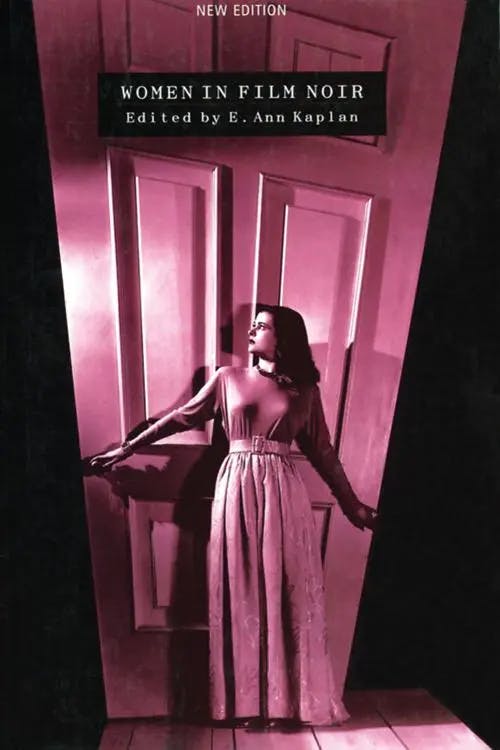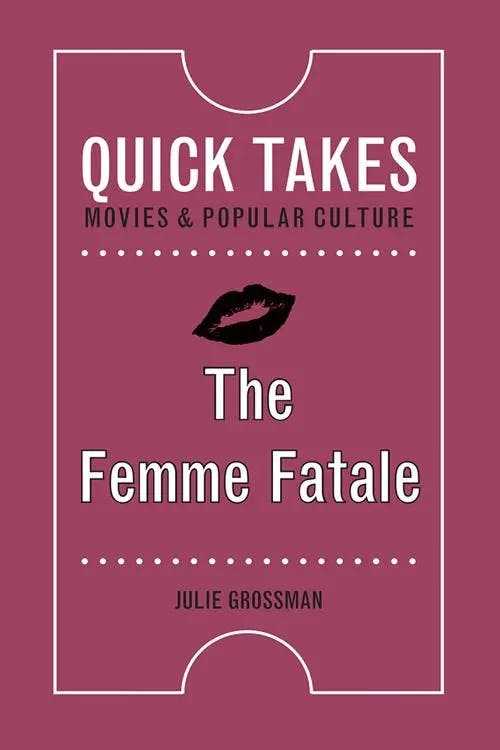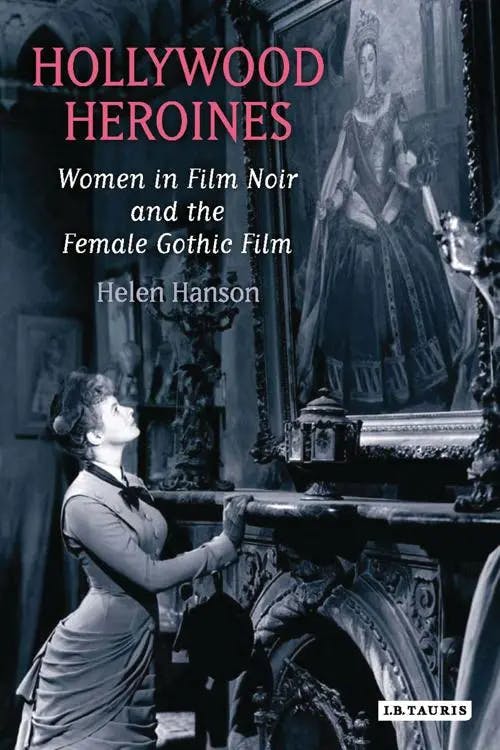What is the Femme Fatale?
PhD, Media Arts (Royal Holloway, University of London)
Date Published: 12.03.2023,
Last Updated: 09.01.2024
Share this article
Defining the Femme Fatale archetype
The Femme Fatale is a female character archetype present across many storytelling forms, but is most closely associated with the cinematic genre of Film Noir. In Women in Film Noir, Janey Place famously describes the Femme Fatale as,
The dark lady, the spider woman, claiming, the evil seductress who tempts man and brings about his destruction is among the oldest themes of art, literature, mythology and religion in Western culture. (2019)
E. Ann Kaplan
The dark lady, the spider woman, claiming, the evil seductress who tempts man and brings about his destruction is among the oldest themes of art, literature, mythology and religion in Western culture. (2019)
From portrayals of Eve and Salome in religious texts and artwork, to Amy Dunne (Rosamund Pike) in Gone Girl (Fincher, 2014), the Femme Fatale is the enduring motif of a defiant and dangerous woman who uses her sexuality to fulfil her desires. The characterisation of the Femme Fatale can even permeate contemporary news stories. In Cultural Constructions of the Femme Fatale Stevie Simkin proposes the now-acquitted ‘celebrity murderess’, Amanda Knox, as an example of the Femme Fatale, dissolving the distinction between the ‘real and the fictive’ (2014). Throughout history, both filmic and real, the Femme Fatale figure constructs both the agency and the transgression of women. In this article we delve into the function of this character type within key Film Noir texts, trace where this figure emerged from historically as well as critically analyse the feminist debates that surround the notion of the Femme Fatale.
How does the Femme Fatale function in Film Noir?
The Femme Fatale is an endemic and synonymous component of Film Noir. As such, in order to understand the Femme Fatale we must first define what Film Noir itself is. In Film Noir: A Critical Introduction, Ian Brookes expresses the difficulties of defining the ‘overextended use’ of Film Noir, describing the term as an ‘amorphous black cloud’ that has settled over film studies (2017). In the most classic and rudimentary sense, however, Film Noir refers to a set of generic conventions; images of a shadowy cityscape or of Humphrey Bogart in low-key lighting, smoking a cigarette beneath a tilted fedora have become indicative of the Film Noir aesthetic. Films like Double Indemnity (Billy Wilder, 1944) and The Maltese Falcon (John Huston, 1941) exemplify the classical Film Noir narrative wherein a male protagonist, often a private eye, sets out to investigate some dubious activity of which he finds himself on the margins. Wrenched away from a stable and lawful – if somewhat mundane – life, he finds himself deeply entwined in a web of criminality. The Femme Fatale not only plays a crucial part in the unfolding of this Film Noir narrative, but her distinct visual style is a key visual signifier of the genre. The below clip from Double Indemnity gives an impression of these generic conventions in action:
First appearing in the 1940s, Film Noir developed from the gangster genre of the previous decade, where female characters were given very little – if any – narrative importance. The Femme Fatale, translating to the ‘fatal’ or ‘deadly’ woman, instead plays an integral part in Noir’s narrative conventions, usually bringing forth the downfall of the male protagonist, who is unable to resist her. The visual style of Film Noir often portrays the Femme Fatale half in shadow, known as chiaroscuro lighting, creating the effect of an unattainable and mysterious beauty, irresistible to the observing male characters. She uses this sexual allure to her own ends; seducing the protagonist before double-crossing him; embroiling him in pernicious networks of gangsters and criminals. Occasionally, the protagonist escapes the dangers of this criminal world, however, a typical Film Noir narrative structure dictates otherwise; succumbing to the temptations of the Femme Fatale is an impulse that precipitates his demise.
Despite the Femme Fatale’s deadly dramatic effect, she is sometimes sympathetic in her fallibility, often herself a victim of manipulation and misunderstanding. Tragic in her own right, the Femme Fatale manages to avoid the designation of the primary antagonist. She, too, often falls victim to her own vanity, her materialistic ambitions, and sexual exploits. She is multifaceted, with moments of vulnerability amongst her displays of independence and ruthless wit. The Femme Fatale’s fate is one of punishment. She often meets a bitter end, or at least, loses the things she comes to cherish, whether that be money, power or love.
Where did the Femme Fatale emerge from?
'It is critical commonplace,’ writes Julie Grossman in The Femme Fatale, ‘that in the United States following World War II the Femme Fatale often reads as a projection of male anxiety about what the wives were doing when the men were in battle.' (2020)
Julie Grossman
'It is critical commonplace,’ writes Julie Grossman in The Femme Fatale, ‘that in the United States following World War II the Femme Fatale often reads as a projection of male anxiety about what the wives were doing when the men were in battle.' (2020)
During the second world war, women were required to join the workforce. They did so in great numbers, taking on the jobs typically associated with men. The state took measures to relieve them of their domestic responsibilities, putting a universal childcare system in motion. Women went to work in factories, operating heavy machinery, as engineers, as nurses and in transportation, providing military support in a range of capacities. This mobilization brought about significant social change. No longer reliant on a male breadwinner, women gained a sense of financial independence, providing them with the opportunity for more personal freedoms like social and sexual independence.
After the war, returning servicemen were faced with the reality of a new social structure. In Women Workers in the Second World War, Penny Summerfield explores discourse around whether the quality of women’s lives were in fact improved post World War Two. On the one hand, the Second World War is often perceived as a turning point in the history of women’s rights, but on the other, a reversal of the mobilization efforts was initiated; many of the measures put in place to facilitate such independence were only temporary wartime action. In the absence of their husbands, women were financially independent and socially empowered; a circumstance which was met with significant resistance upon their husband’s return. This created tension between women’s traditional domestic responsibilities and their newfound independence.
This is the historical context of classical Film Noir. Consequently the Femme Fatale can be read as the contemporaneous personification of female independence. She is brazen in her sexuality and autonomous in her actions. In Film Noir, the Femme Fatale is contrasted by a Girl Next Door character. In mythology, this relationship is comparable to that of the Madonna – whore dichotomy. They are the two archetypal poles of femininity: one is virginal and maternal, the other is sexual and sinful. In Film Noir, the Girl Next Door is often the protagonist’s original love interest, offering him a stable life of traditional values. Where the Femme Fatale has ambitions of wealth and social status, the Girl Next Door dreams of marriage and children. The Femme Fatale is associated with the debauchery of urban living; low-key lighting and shadows indicate her mystery and duplicity whereas the Girl Next Door leads a quiet, domesticated and comparatively controllable life.
Key examples of the Femme Fatale
In The Killers (1946, Siodmak), the Femme Fatale, Kitty (Ava Gardner), is first shown in a low-lit bar, in a long form-fitting gown, whereas her Girl-Next-Door counterpart, Lily (Virginia Christine), first appears in an apron. This iconography indicates the ‘type of woman’ that each represents: the sexual and the domestic. The protagonist in The Killers, known as the Swede, quickly abandons faithful Lily for the alluring Kitty; a decision that hastens his descent into the criminal world. Kitty is caught with stolen jewelry, a crime for which the Swede takes the fall. Upon his release from prison, Kitty has taken a new lover and the couple are intent on double crossing the Swede out of a large sum of money the three were to split after a robbery. By the end of The Killers, both the Swede and Kitty’s new lover have been murdered, and Kitty is left to answer to her crimes of robbery and deceit. A clip below from the Killers helps display’s Kitty’s function in the film.
The same basic narrative structure can be observed in Out of the Past (1947, Tourneur), released in some countries as Build My Gallows High. Protagonist, Bailey (Robert Mitchum), who first appears in a peaceful pastoral setting with his girl-next-door love, Ann (Virginia Huston), is recruited to hunt down femme-fatale, Kathie (Jane Greer). Kathie is on the run, having shot a man and escaped with a large sum of money. Once Bailey finds her in Mexico, she seduces him and the two run away together. By the end of the film, after a series of double-crossings and violent murders, Bailey intends to return to Ann, but it proves too late. He is shot by Kathie before she, in turn, is shot by police.
It is important to note that revisionist renderings of the Femme Fatale are observable in contemporary cinema. From the Neo-Noir Femme Fatale who is not typically punished for her duplicity of sexuality – like Eileen (Nina van Pallandt) in The Long Goodbye (Robert Altman, 1973) – to more current examples, such as Gone Girl, that use the character trope to critique the domestic and societal treatment of women, the Femme Fatale archetype often transcends genre and historical context.
Out of the Past’s Kathie and The Killers’ Kitty, however, give an idea of the narrative function and characterisation of the Femme Fatale in classic Film Noir. She is financially independent and yields significant social power through her harnessed sexuality. In this way, the Femme Fatale is seen as the male rendering of the emancipated woman. She fulfils the imagined potential of such independence, living freely and lavishly, but always at the expense of the men around her who fall victim to this sexual power. It is this narrative pattern that stimulates the analysis of the Femme Fatale as a ‘projection of male anxiety.’ From the economic exigencies of war where women gained financial and social independence, sprung the hyperbolised rendering of such independence. As such, the Femme Fatale remains a fruitful means to explore the representation of women in cinema.
Is the Femme Fatale a figure of empowerment, or a sexist trope?
While it is generally agreed that the Film Noir Femme Fatale represents ‘male fears of an engulfing femininity’, there is a long-standing debate surrounding the moral message that the Femme Fatale sends (1986).
'The 1940s Femme Fatale’, observes Helen Hanson in Hollywood Heroines, ‘always contained a central ambivalence for feminist interpretation.' (2007)
Helen Hanson
'The 1940s Femme Fatale’, observes Helen Hanson in Hollywood Heroines, ‘always contained a central ambivalence for feminist interpretation.' (2007)
We have seen how the Femme Fatale is key in the momentum of the Film Noir narrative, often initiating the action to which the male characters respond. She is a symbol of female agency: smart, resourceful, and self-reliant. Sometimes perceived as a celebration of the powerful independent woman, the Femme Fatale has at times garnered feminist praise. She perhaps accommodates a reappraisal of women’s role in society. The Femme Fatale’s defiance threatens patriarchal structures, and hence, ‘men’s very existence’ (2019). In contrast, the Girl Next Door exercises very little agency, often waiting on the male protagonist to come home to her. One interpretation of these juxtaposing female archetypes is that Film Noir reveres the sexually empowered woman and emphasizes the mundanity of a traditional domestic life.
However, despite the life of luxury, allure and adventure that the Femme Fatale leads, her narrative fate cannot be forgotten. She is ultimately doomed, often in misery or death. In this way, the Femme Fatale can also be read as a cautionary tale. She suffers greatly for her disobedience and the destruction caused by her sexuality is manifold. Not only is the Femme Fatale’s independence punished, but so too are the men who are seduced by her. Hence, the Femme Fatale can be read as an ominous warning of the dangers of female sexuality. The Girl Next Door, however, offers safety and redemption. Often the only living character left in the Noir central network of lovers, she is rewarded for her virtue, her ‘goodness’, and remains an emblem of the protection of traditional family values.
Whether the Femme Fatale is celebrated or disparaged, whether she is an object of desire or a symbol of dread, it is important to note that it is very often from the male vantagepoint that we are invited to speculate. Place asserts:
Film noir is a male fantasy, as is most of our art. Thus woman here as elsewhere is defined by her sexuality: the dark lady has access to it and the virgin does not. That men are not so deterministically delineated in their cultural and artistic portrayal is indicative of the phallocentric cultural viewpoint; women are defined in relation to men. (2019)
Depictions such as this have lead to wider speculation as to the function of the cinematic eye. The way that female characters are exhibited in relation to their sexuality – either as erotic objects or symbols of virtue – has formed the basis for crucial pieces of cinematic theory. Laura Mulvey’s ‘Male Gaze’ is one such theory (1975). Mulvey proposes that the eye of the camera, and hence cinematic language more broadly, is male, inviting viewers to unconsciously participate in a way of seeing that perpetuates patriarchal power. Whether the Femme Fatale falls victim to this cinematic language, or subverts the male gaze, the archetypal character is an invaluable device in investigating film’s relationship to prevailing social structures.
Further Related Reading on Perlego:
What is the Femme Fatale character type in simple terms?
What are famous examples of the Femme Fatale?
Is the Femme Fatale a sexist, or feminist, trope?
What are the key characteristics of the Femme Fatale?
Bibliography
Brookes, I. (2017) Film Noir: A Critical Introduction. (1st ed.). Bloomsbury Publishing.
Grossman, J. (2020). The Femme Fatale. Rutgers University Press.
Hanson, H. (2007). Hollywood Heroines. (1st ed.). Bloomsbury Publishing.
Huyssen, A. (1986) Mass Culture as Woman in ‘After the Great Divide: Modernism, Mass Culture, Postmodernism’. Bloomington: Indiana University Press (pages 44-62).
Mulvey, L. (1975) Visual Pleasure and Narrative Cinema in ‘Screen’, Volume 16, Issue 3, Autumn 1975 (pages 6–18).
Place, J. (2019). Women in Film Noir in ‘Women in Film Noir’ ed. E Ann Kaplan (1st ed.). Bloomsbury Publishing.
Simkin, S. (2014). Cultural Constructions of the Femme Fatale. Palgrave Macmillan UK.
Summerfield, P. (2013). Women Workers in the Second World War (1st ed.). Taylor and Francis.
PhD, Media Arts (Royal Holloway, University of London)
Aoiffe Walsh has a PhD in Media Arts from Royal Holloway, University of London. With a background in film studies and philosophy, her current research explores British literary modernism, with a particular focus on surrealism between the wars. She has lectured and published pieces on documentary and film theory, film history, genre studies and the avant-garde.



